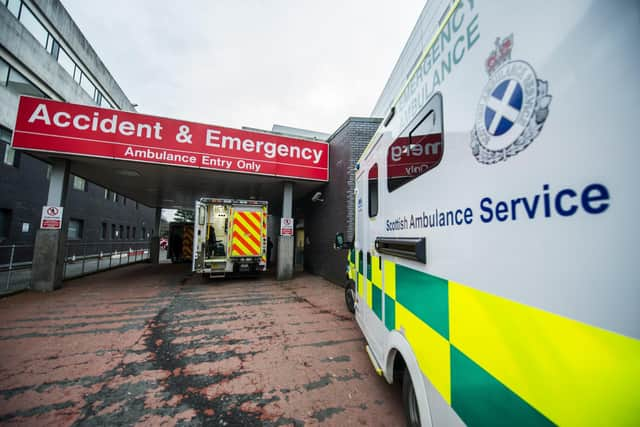NHS Scotland winter crisis: Scotland's A&E performance has dropped dramatically
The proportion of people waiting longer than four hours in A&E in Scotland has risen sharply, new figures show.
According to Public Health Scotland, just 60.8 per cent of people who attended A&E in the week to December 31 were seen within the target time.
Advertisement
Hide AdAdvertisement
Hide AdThis represents a drop from 65 per cent the previous week. The lowest point since reporting began for the monthly A&E figures was in December 2022, when performance fell to 62 per cent.


The number of people waiting more than 12 hours during that week also rose by almost a third, from 964 to 1,271, while the number waiting longer than eight hours rose from 2,584 to 3,178.
Scottish Liberal Democrat leader and health spokesperson Alex Cole-Hamilton said: "The SNP have left the NHS in a perilous position as we enter 2024. It's clear now that Humza Yousaf's NHS Recovery Plan has failed.
"NHS staff have been sounding the alarm for months but the SNP just hasn't been listening. Staff are working flat out and getting burnt out because they simply don't have the beds, safe staffing and resources they need.
"Scotland desperately needs a government that is laser focussed on the day job and will put the voices of NHS staff first.
"Scottish Liberal Democrats would overhaul the NHS Recovery Plan, bring forward an urgent inquiry into the hundreds of avoidable deaths linked to the emergency care crisis and implement measures to tackle burnout among staff.”
The Scottish Government’s health secretary, Michael Matheson, said: “The heightened winter pressure being felt by our A&Es is not unique to Scotland, with similar challenges being felt by emergency departments throughout the UK.
"Although we are seeing a slightly better performance than this time last year, particularly in terms of the number of long waits, we absolutely recognise that the system remains under pressure, and waiting times are longer than we want them to be for some patients.
Advertisement
Hide AdAdvertisement
Hide Ad“We are determined to provide Boards with the support they need to manage continued seasonal pressure on services. Our Winter plan is supporting boards to maximise capacity to meet demand and the expansion of Hospital at Home services is already helping more people receive care at home or as close to home as possible, where clinically appropriate – which aims to relieve pressure on the front door of our A&Es.
“Hospital bed occupancy continues to be a major factor impacting on performance. To address this, the Delayed Discharge and Hospital Occupancy Action Plan is being implemented at pace, delivering actions we know work to ensure patients receive the right care in the right setting.”
Comments
Want to join the conversation? Please or to comment on this article.